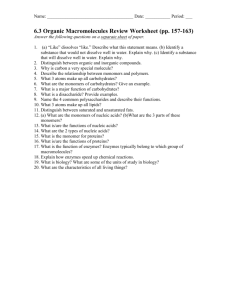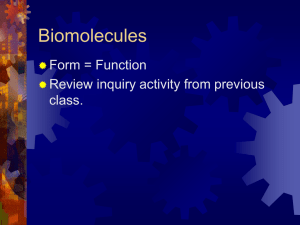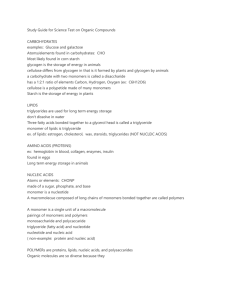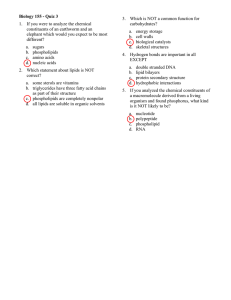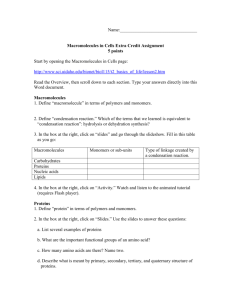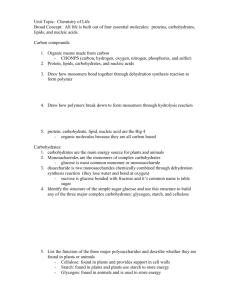Objectives
advertisement
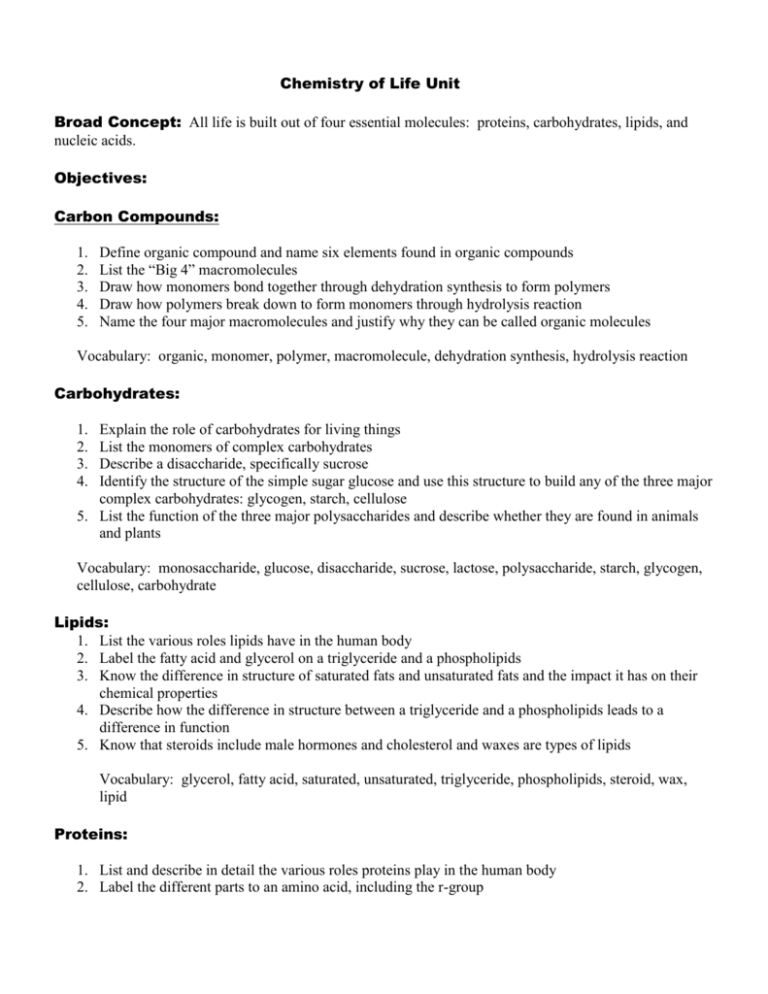
Chemistry of Life Unit Broad Concept: All life is built out of four essential molecules: proteins, carbohydrates, lipids, and nucleic acids. Objectives: Carbon Compounds: 1. 2. 3. 4. 5. Define organic compound and name six elements found in organic compounds List the “Big 4” macromolecules Draw how monomers bond together through dehydration synthesis to form polymers Draw how polymers break down to form monomers through hydrolysis reaction Name the four major macromolecules and justify why they can be called organic molecules Vocabulary: organic, monomer, polymer, macromolecule, dehydration synthesis, hydrolysis reaction Carbohydrates: 1. 2. 3. 4. Explain the role of carbohydrates for living things List the monomers of complex carbohydrates Describe a disaccharide, specifically sucrose Identify the structure of the simple sugar glucose and use this structure to build any of the three major complex carbohydrates: glycogen, starch, cellulose 5. List the function of the three major polysaccharides and describe whether they are found in animals and plants Vocabulary: monosaccharide, glucose, disaccharide, sucrose, lactose, polysaccharide, starch, glycogen, cellulose, carbohydrate Lipids: 1. List the various roles lipids have in the human body 2. Label the fatty acid and glycerol on a triglyceride and a phospholipids 3. Know the difference in structure of saturated fats and unsaturated fats and the impact it has on their chemical properties 4. Describe how the difference in structure between a triglyceride and a phospholipids leads to a difference in function 5. Know that steroids include male hormones and cholesterol and waxes are types of lipids Vocabulary: glycerol, fatty acid, saturated, unsaturated, triglyceride, phospholipids, steroid, wax, lipid Proteins: 1. List and describe in detail the various roles proteins play in the human body 2. Label the different parts to an amino acid, including the r-group 3. Identify that there are 20 different amino acids whose different arrangements impact the shape of the protein and its function 4. Draw an describe how an enzyme works on a substrate using the Lock and Key hypothesis 5. Explain trends in graphs showing relationship between temperate and enzymes and also pH and enzymes Vocabulary: hemoglobin, antibodies, enzyme, amino acid, dipeptide, polypeptide, peptide bond, protein Nucleic Acids 1. Know that DNA and RNA are the two types of nucleic acids 2. Explain the function of nucleic acids in the human body 3. Label the three different parts to a nucleotide: phosphate, sugar, and base 4. Describe the function of DNA and contrast this to the function of RNA Vocabulary: DNA, RNA, nucleotide, nucleic acid
